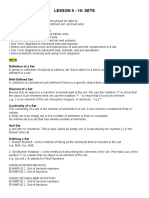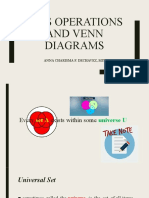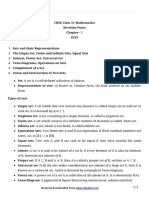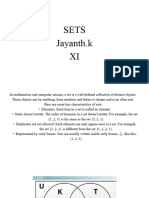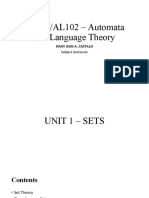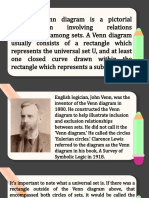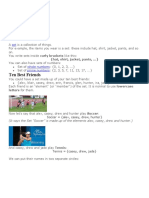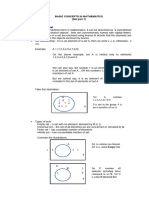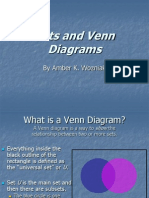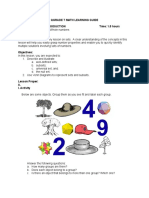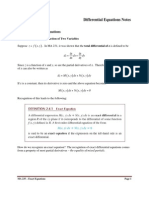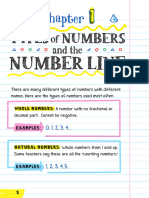sets
Dr. Kaleemullah Bhatti
June 2024
1 Introduction
Explanation of Sets, Set Operations, and Venn Diagrams
Sets
A set is a well-defined collection of distinct objects, considered as an object
in its own right. For example, the numbers 1, 2, and 3 are distinct objects
when considered separately, but when they are considered collectively as the set
{1, 2, 3}, they form a single object.
Notation:
• Set: Typically denoted by capital letters (e.g., A, B, C).
• Elements: Denoted by lowercase letters or numbers (e.g., a, b, c, 1, 2, 3).
Examples:
• A = {1, 2, 3}
• B = {a, b, c}
• C = {x | xisaprimenumberlessthan10}
Types of Sets
• Empty Set (∅): A set with no elements.
• Finite Set: A set with a finite number of elements.
• Infinite Set: A set with an infinite number of elements.
• Subset (⊆): A set A is a subset of set B if all elements of A are also
elements of B.
• Proper Subset (⊂): A set A is a proper subset of set B if all elements
of A are in B and A ̸= B.
• Universal Set (U ): The set that contains all possible elements in a
particular context.
1
�Set Operations
1. Union (∪): The union of two sets A and B is the set of elements that are
in A, in B, or in both.
A ∪ B = {x | x ∈ Aorx ∈ B}
2. Intersection (∩): The intersection of two sets A and B is the set of
elements that are in both A and B.
A ∩ B = {x | x ∈ Aandx ∈ B}
3. Difference (−): The difference of two sets A and B is the set of elements
that are in A but not in B.
A − B = {x | x ∈ Aandx ∈
/ B}
4. Symmetric Difference (∆): The symmetric difference of two sets A
and B is the set of elements that are in either A or B but not in both.
A∆B = (A − B) ∪ (B − A) = {x | x ∈ Aorx ∈ B, butnotinboth}
5. Complement (A′ ): The complement of a set A with respect to a uni-
versal set U is the set of elements in U that are not in A.
A′ = {x | x ∈ U andx ∈
/ A}
Venn Diagrams
A Venn diagram is a way of picturing sets and their relationships using circles.
Each set is represented by a circle, and the relationships between the sets (such
as intersection, union, and difference) are represented by the overlaps and non-
overlaps of these circles.
Key Concepts:
• Universal Set: Represented by a rectangle that encloses all other sets.
• Set: Represented by a circle within the universal set.
• Intersection: The area where two circles overlap.
• Union: The total area covered by two or more circles.
• Difference: The area of one circle excluding the overlapping parts with
another circle.
• Complement: The area outside a particular circle but within the rect-
angle representing the universal set.



